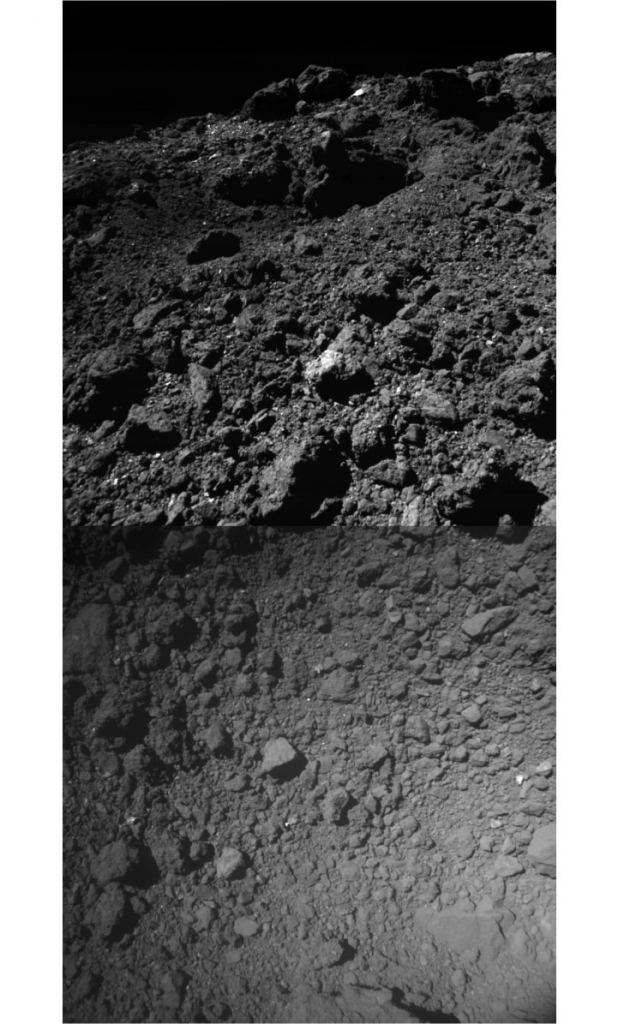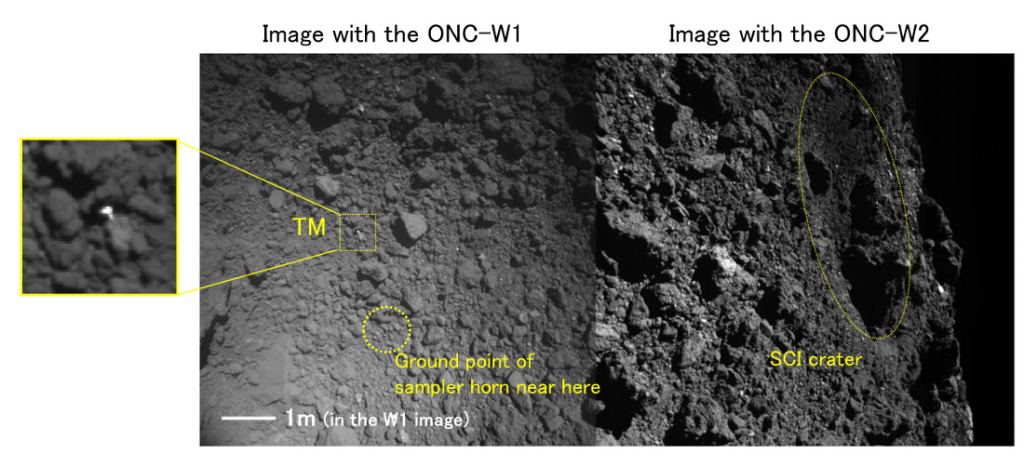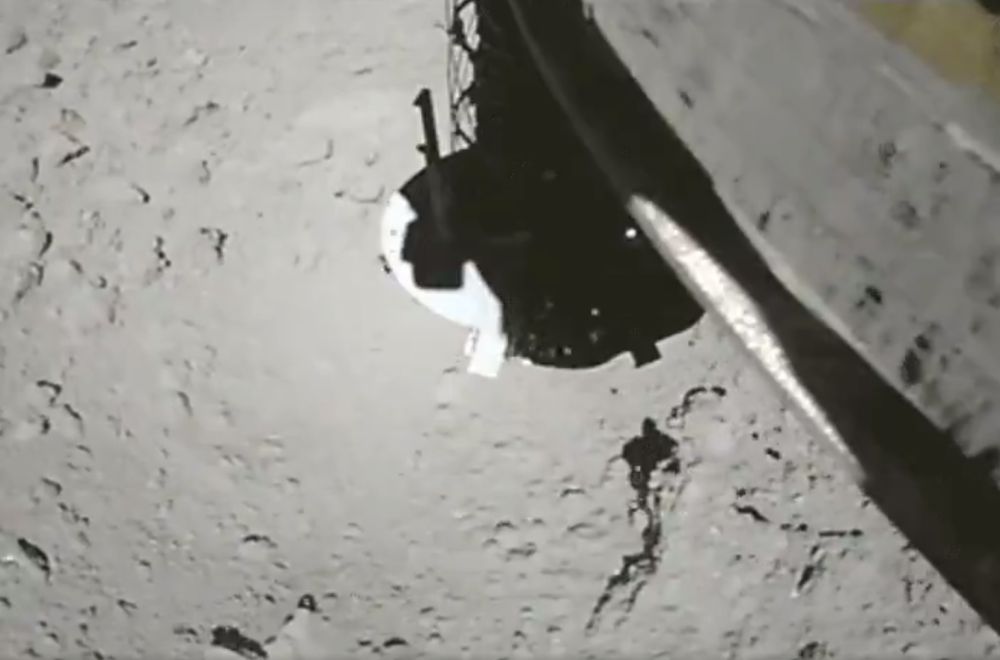A new video shows Japan’s Hayabusa 2 sample return spacecraft collecting samples from asteroid Ryugu. The spacecraft has been at Ryugu for months now, and it’s all been leading up to this. In the video, you can clearly see airborne asteroid dust and particles swirling around in the low gravity.
It’s especially cool because the camera that caught the action was a publicly-funded instrument that isn’t really a scientifically important part of the spacecraft’s payload.
The video shows Hayabusa 2 lowering itself and its sampling horn into the crater it blasted in the surface of Ryugu with its impactor. This is the second sample gathered by Hayabusa 2. The first sample was a surface sample collected back in February 2019. This second one was collected on July 11th, 2019, and is the first sub-surface sample from an asteroid.
Note that this video is made up of individual camera images made into a video and being played back at 10x speed. The spacecraft’s descent onto Ryugu was much slower and more controlled, obviously.
The video covers the action at altitudes between 150 meters and about 8 meters (490 ft and 26 ft.)
JAXA released some other images from the second sampling operation, too. This first image is a composite taken with Hayabusa 2’s Optical Navigation Cameras (ONC W1 and ONC W2.)

Here’s the same images with some labeling and annotations.

Asteroids like Ryugu are ancient, natural artifacts from the early days of the Solar System. They hold clues to the formation of the Solar System. Sub-surface samples are particularly intriguing because those rocks haven’t been exposed to any space-weathering the way surface samples have.
Hayabusa 2 will fly-by Earth in December 2020, and it’ll launch its Sample Return Capsule (SRC) down to Earth to be retrieved and studied. From there, Hayabusa 2 will go and visit another asteroid. JAXA predicts that the spacecraft will have about 30 kg of xenon fuel for its ion engines, and they’re sending it to asteroid 2001 WR1 (probably.) It won’t do any sampling there, but will fly-by and see what it can learn. That’ll happen in 2023.
More:
- Universe Today: Hayabusa 2 is the First Spacecraft to Sample the Inside of an Asteroid
- Universe Today: Here’s the Video of Hayabusa2 Bombing Asteroid Ryugu
- Wikipedia: Hayabusa 2
- JAXA: Hayabusa 2

